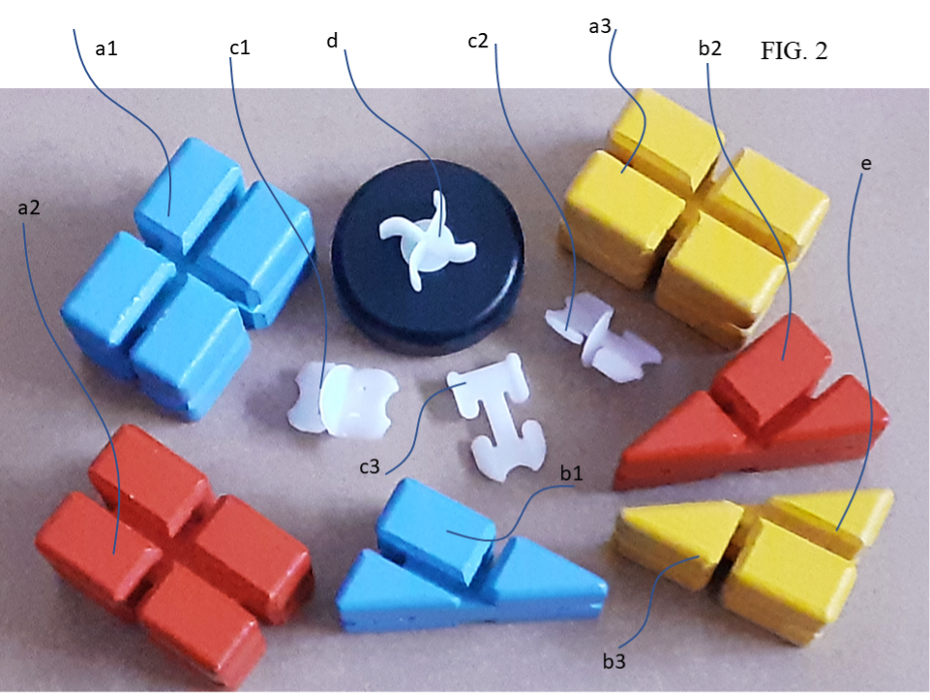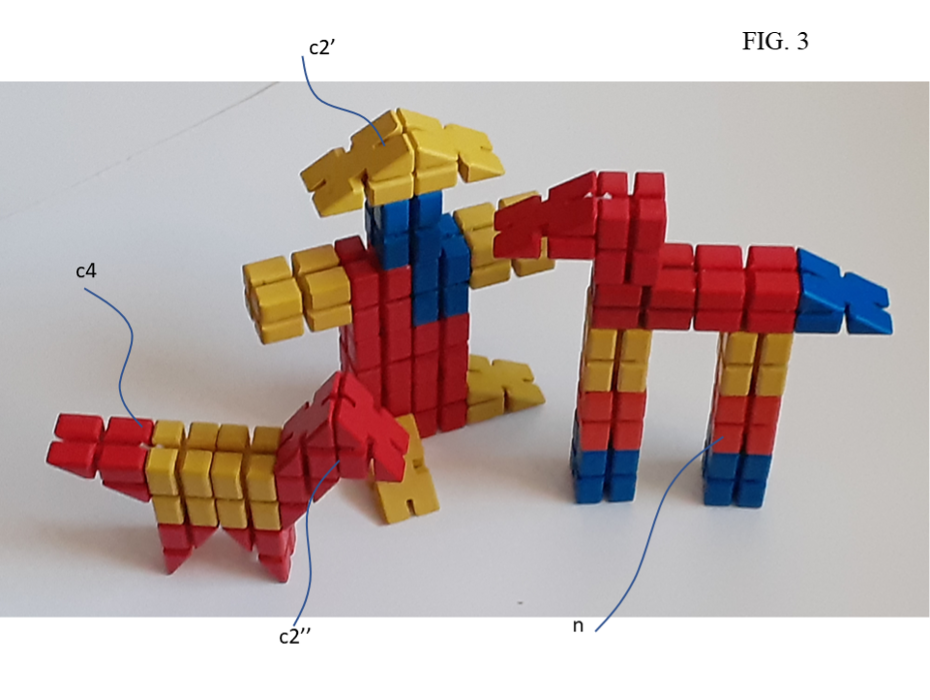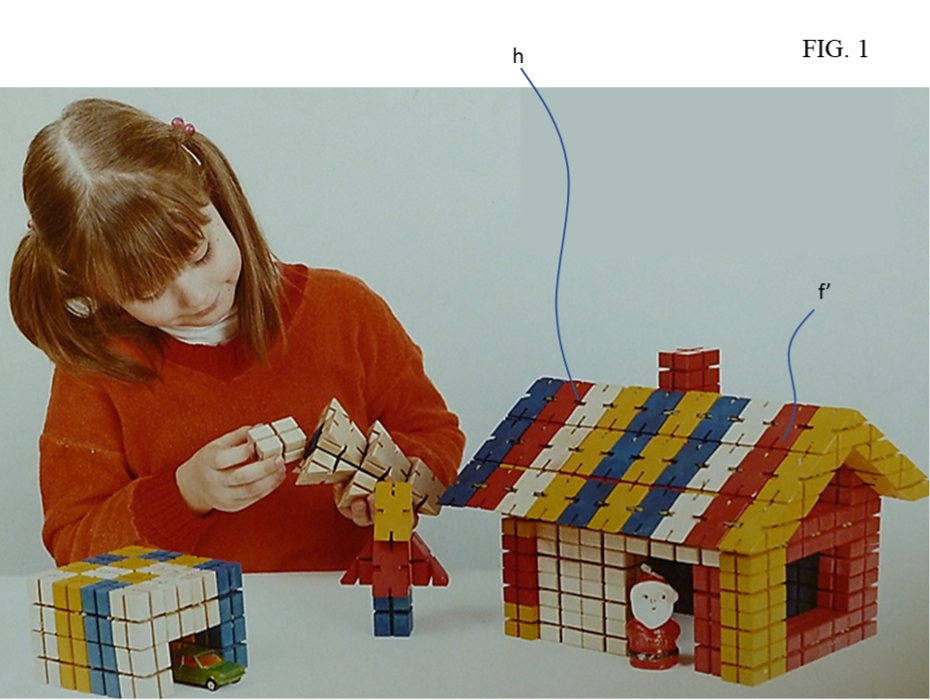Palicca




A THREE-DIMENSIONAL WOODEN OR COMPOSITE PLASTIC TOY BUILDING SYSTEM
Three-dimensional construction is a normal and natural way of building in both adult and children's environments. Despite this fact, toy building systems are still mainly based on the principle of two-dimensionality, where elements are superimposed on each other, and actual three-dimensional construction, i.e. in all axial directions, is not yet known. The system in question has been developed to remedy this shortcoming.
Climate change is a reality against which there seems to be no effective remedy. We should be able to bind carbon dioxide in the air for decades to come so that it does not get back into the atmosphere. Even when recycled, the products of the paper and pulp industry will be released into the atmosphere as carbon dioxide in just a few years. The production of sawn timber and furniture cannot be increased substantially and rapidly. They would bind carbon dioxide for several decades without returning to the atmosphere.
For wooden, mass-produced 3D building systems, the situation is substantially more positive; they have a life cycle of tens of years, i.e. no carbon dioxide is returned to the atmosphere, almost all wood species are suitable, they are automatically produced for the global market at the supermarket chain level and for Internet sales, there are no competitors, and when produced by a small country like Finland, which accounts for only one per mille of global industry, the export opportunities are unlimited and Finland's emissions are reduced by more than 50%. For the national economy and employment, especially in rural areas and for young people, such an industry would be of crucial importance.
Since hollow elements made of composite material can also be used for the production of elements, production can become fully automated, thus substantially increasing the importance of the product's industrial use and, at the same time, its export potential, as the elements can be machine-washed and there is no material waste (bark and sawdust waste).The characteristics of my invention are set out in the patent claims.
The characteristics of my invention are set out in the patent claims.
Figure 1 shows an example of construction with this system.
Figure 2 shows the basic components of the system.
Figure 3 shows an example of the principles for using the basic components.
Figure 4 shows the connectors of the system and their operating conditions.
Figure 5 shows the use of the wheel and construction in a diagonal direction.
As shown in Figure 1, the system can be used to build structures of unlimited size (FIG. 1, h).
As shown in Figure 2, it is assumed that the components of the basic system made of solid wood, hollow composite plastic or similar raw material are square grooved elements of one and a half times the thickness, seen from the end (FIG. 1, a1, a2, a3), triangles made of them with diagonals (FIG.1, b1, b2, b3), connectors (FIG.2, c1, which centres the elements to be connected, c2, which centres only one element and c3, (FIG.3, c2', c4) which connects the triangles side by side (FIG. 4, i1', i1'') and the wheel (FIG.2, d). The grooves of the elements have a chamfer (FIG 2, e), which facilitates pressing the connector into the joint groove.
Figure 3 shows that images of animals found in nature can be created by changing the height; giraffe (n), dog (c2'').
As shown in Figure 4, it can be seen that at the bottom of the groove of the structural element there is a locking groove (FIG.4, l, l') where the locking threshold (j3) of the connector is located. The connector has a flex area (j1) and a concentric spacer (j2) and a finger grip to remove the connector with the fingernail of the thumb (FIG. 4, m).
As can be seen in Figure 5, the functionality of the play can be increased with the wheel (FIG. 5, g) and a natural example, the snake (FIG. 5, F)

PATENT CLAIMS
- Three-dimensionally buildable toy building elements made of solid wood, hollow composite plastic or similar raw materials, characterised by the fact that the components of the basic system, seen from the end, are square grooved elements, one and a half times the thickness in length (FIG. 1, a1, a2, a3), triangles made of them with diagonals (FIG.1, b1, b2, b3), connectors (FIG.2, c1, which centres the elements to be connected, c2, which centres only one element and c3, (FIG.3, c2', c4) which connects the triangles side by side (FIG. 4, i1', i1'') and the wheel (FIG.2, d). The grooves of the elements have a chamfer (FIG 2, e), which facilitates pressing the connector into the joint groove.
- Three-dimensionally buildable toy building elements made of solid wood, hollow composite plastic or similar raw materials, characterised by the fact that there is a locking groove (FIG.4, l, l') at the bottom of the groove of the building element, where the locking threshold (j3) of the connector is located.
- Three-dimensionally buildable toy building elements made of solid wood, hollow composite plastic or similar raw materials, characterised by the fact that the connector has a flexible area (j1), a concentric spacer (j2) and finger grip for removal of the connector (FIG. 4, m).
SUMMARY
A three-dimensionally buildable toy building system made of solid wood, hollow composite plastic or similar material, in which the elements are locked together in a locking groove (FIG.4, l, l') at the bottom of the groove of the building element by means of a locking threshold (FIG. 4, j3)ACKNOWLEDGEMENT OF RECEIPT
Applicant: Martti Tapani Hotti, Keskustie 13, 51600 Haukivuori, Finland
Agent: Martti Tapani Hotti, Keskustie 13, 51600 Haukivuori
Name of the invention: Three-dimensionally buildable wooden or composite plastic toy building system
On 2 January 2023, the Finnish Patent and Registration Office has received your patent application, which has been assigned the application number 20230001. This application number must be mentioned in all communications to the Finnish Patent and Registration Office concerning your application.
MH-Invention Oy Ltds processing program is the only one in the world, which has over 500 billion supporters
aged 3-12 yrs. Processing program is able to reduce pollution, increase CO2 suction effect and increase employment.
Because the circulation of investment is even negative, profit expectations per year is over 1000 times.
When you order Rino 3D- and/or Jumbonixi 3D- products and pay them by ordering to MH-Invention Oy Ltds
bank account FI24 5342 0120 0540 99, you will get ordered items delivered to you within 6 weeks.
Licensing: All products are able to licensed with exclusive or shared rights.